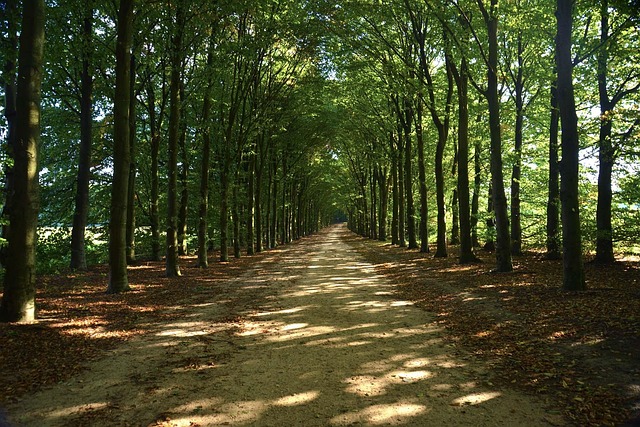Community gardens are vibrant, family-friendly spaces that transform urban areas into thriving ecosystems, offering colorful flora, fragrant herbs, and vegetables. They enhance neighborhood well-being through social bonding, peaceful retreats from daily life, and scenic landscapes comparable to botanical gardens. Volunteering in these gardens provides diverse roles for all skill levels, from tending to plants and organizing events to maintaining dog-friendly parks. For dog lovers, they offer a unique blend of community service and canine recreation, while beginners can explore local options and connect with coordinators for an accessible entry point into community gardening.
Looking for meaningful ways to contribute to your community? Explore the vibrant world of community gardens! From botanical gardens offering educational experiences to dog-friendly parks and nature reserves fostering outdoor adventures, these green spaces provide diverse volunteer opportunities. Uncover the countless benefits of connecting with nature while enhancing scenic landscapes. Whether you’re a first-time volunteer or seeking family fun, this guide navigates the rewarding journey of contributing to your local ecosystem.
- Unlocking Benefits: Why Community Gardens Are Vital to Your Neighborhood
- Exploring Different Types of Volunteer Roles in Green Spaces
- Family Fun and Educational Opportunities in Botanical Gardens
- Dog-Lovers' Paradise: Volunteering at Canine-Friendly Parks and Nature Reserves
- Getting Started: A Step-by-Step Guide for First-Time Community Garden Volunteers
Unlocking Benefits: Why Community Gardens Are Vital to Your Neighborhood

Community gardens are more than just green spaces; they are vibrant hubs that unlock a myriad of benefits for your neighborhood. These urban oases transform empty lots into thriving ecosystems, fostering a sense of community and connection to nature. Imagine family-friendly parks overflowing with colorful flowers, fragrant herbs, and vegetables, providing a peaceful retreat from the hustle and bustle of daily life. They offer a unique opportunity for residents to come together, learn about sustainable practices, and contribute to a healthier environment.
In addition to their ecological advantages, community gardens attract visitors with stunning scenic landscapes that rival those of botanical gardens. These natural spaces cater to dog-friendly parks, encouraging leashed four-legged friends to explore and play. They become gathering places where people of all ages can engage in meaningful activities, from tending to plants to organizing community events, thereby strengthening social bonds and enhancing the overall well-being of the neighborhood.
Exploring Different Types of Volunteer Roles in Green Spaces

Volunteering in community gardens offers a diverse range of opportunities for individuals to connect with nature and contribute to their local spaces. Roles can vary widely, catering to different interests and skill sets. Some positions might involve maintaining the garden’s flora, such as pruning, weeding, and planting new species, ensuring a vibrant and healthy botanical garden or nature reserve. Others may focus on enhancing the visitor experience through activities like organizing community events, leading educational workshops for schools or families, or creating engaging displays that showcase the beauty of scenic landscapes.
Community gardens also provide space for more specialized roles, such as tending to specific areas like herb gardens or vegetable patches, which can be especially appealing to those interested in sustainable living and local food production. Additionally, many parks and reserves welcome dog-friendly volunteers who can assist with tasks like cleaning up after canine visitors or participating in activities that promote the welfare of both dogs and their owners, ensuring a balanced and enjoyable environment for all.
Family Fun and Educational Opportunities in Botanical Gardens

Volunteering in community gardens offers a unique chance for families to bond while exploring the beauty of nature. Botanical gardens, with their diverse plant life and often serene settings, provide an ideal environment for educational experiences. These family-friendly parks and nature reserves not only encourage children to appreciate the natural world but also teach them about biodiversity, ecology, and sustainable practices. Many community gardens are designed as engaging learning spaces, hosting interactive workshops and events that cater to all ages.
In these scenic landscapes, volunteers can help with various tasks, from planting and nurturing seedlings to maintaining pathways and creating appealing displays. Dog-friendly parks within botanical gardens offer additional recreational benefits for families with pets. By participating in community garden initiatives, parents and children can enjoy quality time together while making a positive impact on their local green spaces.
Dog-Lovers' Paradise: Volunteering at Canine-Friendly Parks and Nature Reserves

For dog enthusiasts, volunteering in community gardens offers a unique opportunity to combine their passion with giving back to nature. Many parks and nature reserves now embrace canine companionship, creating dedicated spaces for dogs to roam and play freely. These dog-friendly areas within scenic landscapes not only provide an enjoyable environment for both pets and owners but also contribute to the overall health and well-being of communities.
Volunteers can play a vital role in maintaining these special green spaces. They can assist with tasks such as cleaning up after furry friends, planting and tending to community gardens, or even organizing events that foster a sense of community among dog lovers. It’s a chance to immerse oneself in the beauty of botanical gardens while enjoying the lively atmosphere of family-friendly parks, all while making a positive impact on local nature reserves.
Getting Started: A Step-by-Step Guide for First-Time Community Garden Volunteers

For those new to community gardening, taking that first step can seem daunting. But don’t be overwhelmed! Getting involved is easier than you think. Here’s a simple guide to get you started:
1. Explore Local Options: Start by investigating community gardens in your area. Many towns and cities have dedicated spaces, from bustling urban oases within family-friendly parks to scenic landscapes nestled in nature reserves. Check online directories or ask at local botanical gardens or dog-friendly parks for a list of nearby garden opportunities.
2. Reach Out & Connect: Most community gardens welcome volunteers with open arms. Contact the garden coordinators directly – they’ll be happy to answer your questions and guide you through the process. Some may offer orientation sessions, while others might match you with an experienced volunteer to help you get acclimated. Don’t hesitate to ask about tasks suited to your interests and skill level, whether it’s weeding, planting, or simply enjoying a peaceful walk among the blooms.














